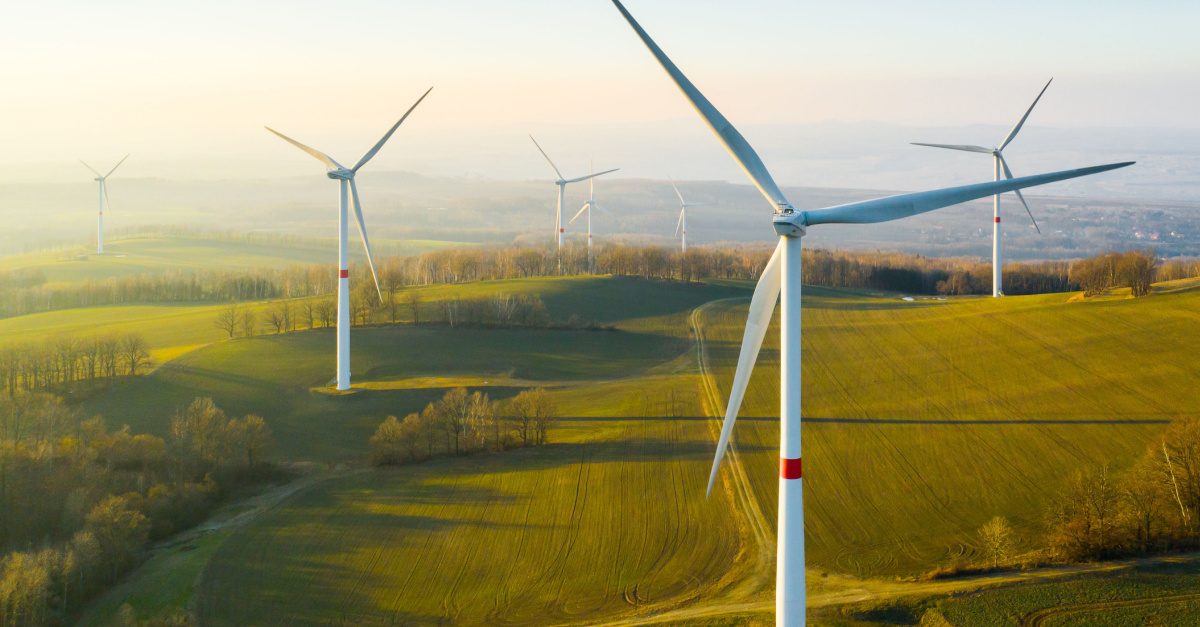
What is renewable energy, and how can you use it in your home?
You may be familiar with the term ‘renewable energy’, but what does it actually mean?
Renewable energy describes any source of energy that is replaced at a higher rate than it is used, therefore meaning the supply is not depleted. This means that solar, wind, hydro, tidal, geothermal and biomass energy sources are all classed as renewable. Because they are all replenished by natural processes, renewable energy sources are much better for the environment. They harness the natural resources of the world around us, rather than relying on harmful fossil fuels to generate power.
Let’s explore the different types of renewable energy in more detail, as well as how you can use this amazing resource in your own home.
Types of renewable energy
Solar
The sun offers a huge pool of energy that we can harness to power our homes and businesses. Solar panels absorb the sunlight, converting it into electricity. The more sunlight the panels absorb, the more power they generate.
Wind
Wind turbines are strategically placed to catch the wind as it blows. Even a gentle breeze can turn a turbine, creating kinetic energy. This is then converted into electricity.
Hydro
Hydro power harnesses the power of flowing water from rivers and streams – the water is pushed through a turbine, making it spin, and therefore producing kinetic energy which can be converted into electricity. It relies on a drop in elevation to create a rush of water powerful enough to generate electricity.
Tidal
Similar to hydro power, tidal power relies on the movement of water due to the tide, rather than gravity. We are still learning about this area of renewable energy, but it has great potential, as tides can be predicted accurately – unlike something like wind, which cannot.
Geothermal
Geothermal energy refers to the heat that is stored in the Earth, under the surface. It was generated during the formation of the planet. This energy can be tapped, creating steam, which drives the turbines that generate power.
Biomass
Biomass energy is created using renewable organic matter such as wood, corn, soybeans, sugar cane, food waste, wool and animal manure. These products are either burned, or thermochemically, chemically or biologically converted into solids, gas or liquid fuels as appropriate.
What options do you have at home?
Generating your own electricity
Whilst all of the above are forms of renewable energy, not all of them will be suitable for generating power at home. On a practical level, not many of us have a fast flowing stream running through our property, for example, or the proper facilities for converting biomass. However, plenty of homes will be able to support solar power and wind energy.
Solar panels can be placed on your roof and then connected to your electric circuit, meaning that you use solar energy first, and grid energy second. Any extra energy that you generate but don’t use can be sold back to the grid through the Smart Export Tariff – you’ll just need a smart meter to record how much electricity you’re generating.
Depending on the size and location of your property, you may also be able to install a wind turbine. These are much smaller than the ones you see in the countryside, and can be pole-mounted or attached to the side of your house. A 6kW turbine could generate 9,000 kWh per year, saving you £540 in bills and around 2,000kg of carbon emissions.
Using a renewable supplier
If you want to reduce your carbon footprint, but don’t have the ability to generate your own renewable energy at home, you can opt for a renewable energy supplier. Whilst there’s no way of ensuring that the energy that enters your home is completely green, by opting for an environmentally conscious supplier, you can increase the number of renewable energy units in the national grid mix.
Go greener
Renewable energy is an important resource for the future of our planet. By transitioning over to these greener methods of power generation, we can reduce our carbon footprint and our dependence on harmful fossil fuels.
Author bio: Emelia Greenway
A passionate believer in the power of renewable energy, Emelia aims to write pieces that reduce jargon and make the options clearer.

Visit The Sustain Chain for more fantastic ways you can create a sustainable future.
